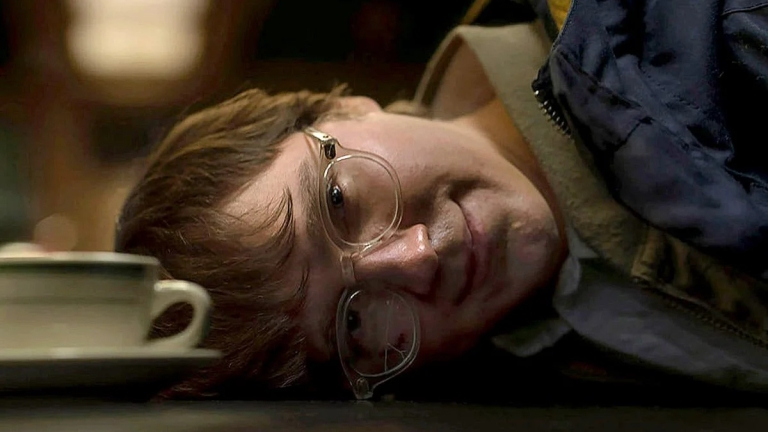Technically speaking, there isn’t a post-credits scene in Matt Reeves’ The Batman. You can get up from your seat when the titles roll on the closing image of a dejected but determined Batman riding into Gotham’s dusk (or press “pause” if you’re now watching it at home thanks to HBO Max). There is no teaser or easter egg after the credits roll, unlike the majority of contemporary superhero movies.
Theoretically, this is encouraging. A post-credits scene in Man of Steel is apparently something that Christopher Nolan advised Zack Snyder not to include since “a real movie wouldn’t do it” almost ten years ago. While that was the prevailing belief at the time, Zack Snyder’s Justice League definitely had post-credits scenes. It is now accepted as the cost of doing business.
The Batman doesn’t feel the need to tack on a glorified teaser—that is, an advertisement—for the upcoming movie or movies in its interwoven series, which is why that decision should be viewed as refreshing. Because post-credits scenes have lost their novelty and are now merely used as a way to wink at the audience in the occasional Disney movie or comedy. They also lost some of their excitement when Samuel L. Jackson appeared in Iron Man in 2008 and began babbling on about “the Avengers Initiative.” So much so that by the time you reach last year’s Shang-Chi, it primarily consists of a group of digital floating heads that have been pasted in to let people know that they, too, are a part of the infinite multiheaded corporate monster. It becomes tiresome after a while.
Post-credits scenes are intended to serve as a diversion by getting viewers to think on upcoming products rather than the movie they just watched. You’re (hopefully) talking about how the Vulture ended up in this universe and how that will tie into what is happening in Venom 3 rather than criticising the attributes or lack thereof in Morbius. These scenes have a certain cynicism to them as a plot technique, so it’s preferable for everyone when a movie is strong enough to stand on its own without them.
Therefore, it is rather pleasing that The Batman omitted a scene after the credits rolled. even though the film still had a working post-credits scene before that.
The Joker and The Batman
The Batman technically does not have a post-credits scene, however there is a moment in the film that accomplishes all the tasks listed above. It simply has the poor grace to awkwardly insert itself into the epilogue of the film.
There is an entirely necessary sequence where we cut to Arkham Asylum during The Batman’s conclusion, between Robert Pattinson’s vigilante realising he can be more than just “Vengeance” and him bidding Selina Kyle farewell. The insane patient down the hall, an unknown patient with green hair, white skin, and horrifying facial scars, is consoling the despondent Riddler (Paul Dano) there. Barry Keoghan portrays him, and it is evident that he is the Joker.
Since then, Matt Reeves has repeatedly confirmed this, even to us. “The notion is that what you’re seeing is a pre-Joker, Joker,” he told Den of Geek back in March. The writer-director continued by claiming that Conrad Veidt’s portrayal of a tragic character who was unable to stop grinning in The Man Who Laughs (1928) served as his inspiration. Reeves also sought to mimic Joseph Merrick, a.k.a. the Elephant Manfacial ,’s deformity.
All of which provide intriguing new perspectives on a supervillain who has grown to be one of cinema’s most overused figures. That, however, is not how the scene unfolds. Instead of appreciating the gothic symphony Reeves has just created over the past three hours, it plays out like an arbitrary teaser, an easter egg, or a post-credits scene in all but name. Its purpose is to get people talking about the possibility of seeing Joker in the upcoming Batman movie.
Unfortunately, the sequence can’t help but sound studio-like. Ironically, Warner Bros. and Reeves shared a deleted scene with Keoghan’s “pre-Joker” that is much more similar to what Reeves had previously described. Check it out here if you haven’t seen it yet. While in Arkham, Pattinson’s Batman visits the Joker to get guidance on the Riddler case. It clearly owes a lot to The Silence of the Lambs (1991), but it’s a sequence that introduced the Joker in this reality and generated a lot of discussion about why he has scars and behaves in the manner that he does.
The scene was ultimately removed because it probably slowed down the rhythm; it deals with a depressing character beat that would have happened during the film’s drawn-out first act. The Joker scene, which is still included in the finished movie, may arguably be regarded to be unnecessary and to disrupt the narrative flow in a similar way, if not more so. However, it wasn’t included because it was crucial; rather, it was included as an easter egg to get fans excited about the upcoming film and all the rumours and instant buzz that invites.
A commercial break showcasing impending attractions is not necessary for a film as fantastic as The Batman. Even when it makes small errors like this one at the end, the superhero film still stands out as being wonderful.
HBO Max is currently streaming The Batman.
Our Team DCS includes 5 different writers proficient in English and research based Content Writing. We allow them and encourage them to follow the Entertainment news all day long. Our posts, listicles and even the exclusives are a result of their hard work.











